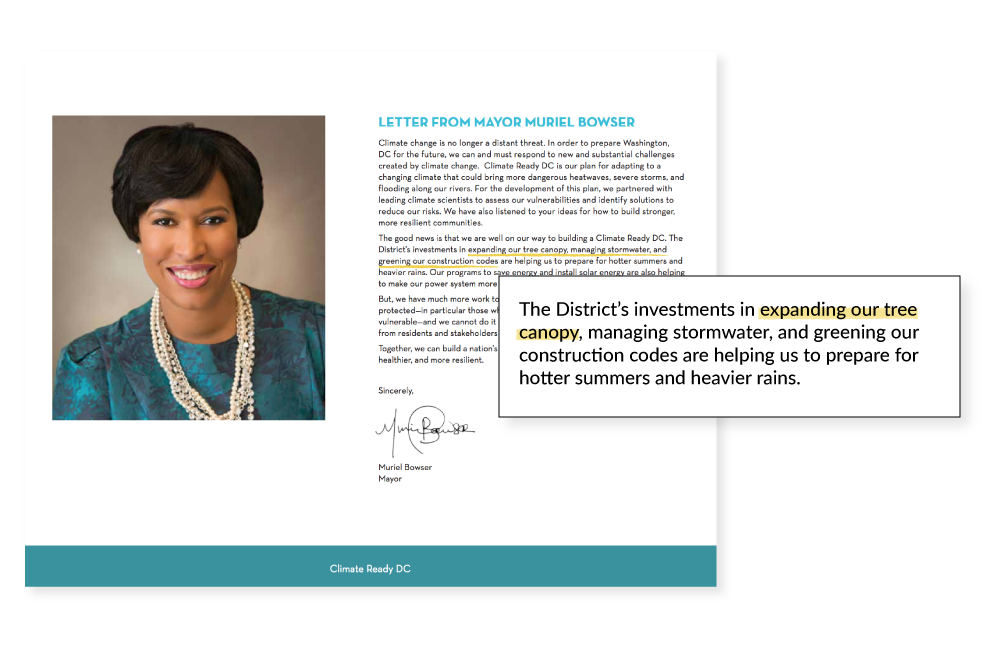Climate change experts are predicting hotter summers and heavier rains in Washington, D.C. Back in 2016 the District Department of Energy and the Environment (DOEE) drafted the Climate Ready D.C. Plan. The goal of that plan was to identify strategies to protect communities from the effects of climate change. During the public engagement period Casey Trees staff and volunteers worked with the city to identify how trees could be incorporated into the plan as a management tool.
Research shows that trees increase climate change resilience in cities. D.C.’s trees are an incredible tool for dealing with the effects of climate change. They work really hard to absorb excess stormwater and to cool surrounding air. Tree leaves catch rain at the canopy level too — that reduces the sheer volume of stormwater that can overwhelm our sewer system during heavy storms.
Impervious surfaces like pavements, concrete and rooftops seal the soil surface and create polluted runoff of 55 percent or more. In contrast, natural ground cover absorbs stormwater resulting in less than 10 percent runoff.
During intense rainstorms — which are happening more and more often — water rushes over paved surfaces, picking up trash, oil, pesticides and other pollutants that flush into storm-drain systems. Each year, 3 billion gallons of polluted water flows into the Potomac and Anacostia Rivers, eventually making its way to the Chesapeake Bay.
With input from our advocates, D.C. officials drafted a plan to establish climate adaptation strategies. The Department of Energy and the Environment actively solicited feedback from individuals, businesses, and organizations to make sure the plan reflected the needs and priorities of D.C.’s many stakeholders. We recommended everything from planting trees in raingardens, to strategically planting trees near buildings to keep them cooler, and planting trees near riverbanks to keep soil stable during floods. Ultimately all of these strategies were incorporated into the final Climate Ready DC Plan.

01 - Raingardens
Plant trees in raingardens to absorb even more stormwater
02 - Buildings
Plant shade trees to keep homes and buildings cool
03 - Streets
Keep street tree boxes filled to shade pavement
04 - Riverbanks
Plant trees along riverbanks to keep soil stable during floods